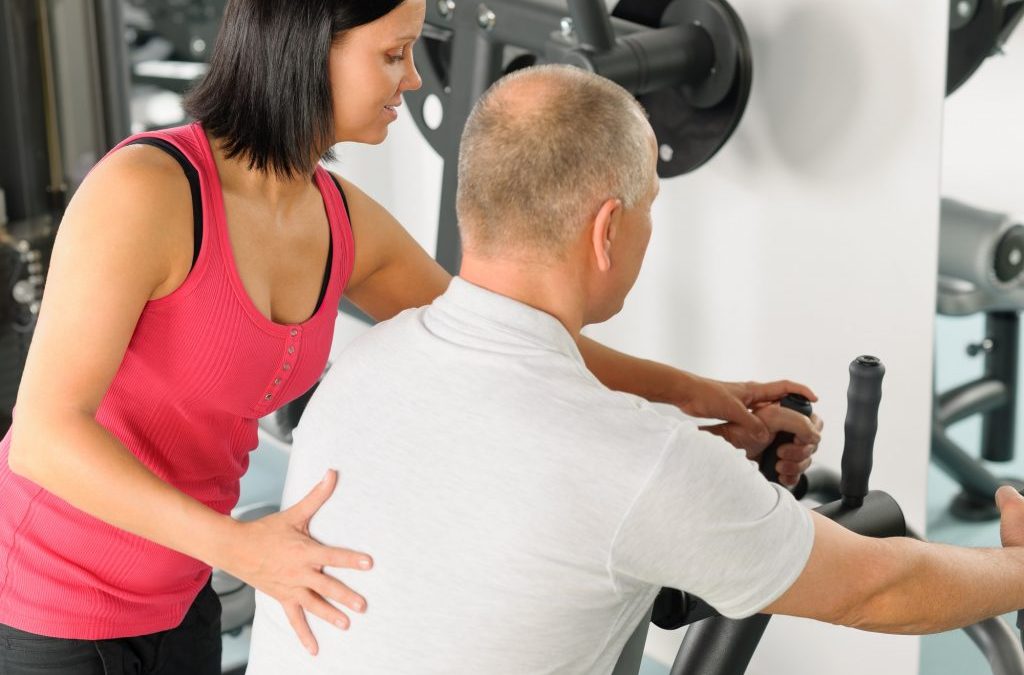By Darcy Fugate, AFAA Certified Trainer
After many years teaching fitness classes and working individually with clients as a personal trainer, I have learned a thing or two about what helps people reach their fitness goals.
One of the reasons people seek the guidance of a personal trainer is because they have tried to make changes on their own and have not been successful. Often, a person will compare notes with a friend and wonder why they are having different results when they seem to be doing the same workout. These challenges are due to the fact that every body is different – literally. Not only do people’s physical fitness needs vary based on body type, age and heredity, but their personal values, past successes or failures and environmental factors also play a huge role in how likely they are to meet their fitness goals.
When I meet with a new client, I ask them the following questions:
- How old are you?
- When was the last time you worked out?
- How often do you work out?
- Do you strength train/lift weights? How often?
- Do you do cardio exercise and, if so, for how long and how many days per week?
- How high is your RPE (rate of perceived exertion) while doing cardio and for how long?
- What do you like best for cardio?
- What do you like least for cardio?
- How do you feel about your eating habits?
- Have you ever food journaled?
- What is your favorite time of day to work out?
- Have you ever smoked?
The answers to these questions become the foundation for a personalized training program. As we work together, we talk about what is and isn’t working and we make adjustments. The most important thing is that the plan reflects the individual values and goals of the person, that they enjoy their workouts and feel like they are in charge of their own health transformation.
A note about Rate of Perceived Exertion (RPE) & Weight Management
When we talk about RPE we are talking about how hard you feel like you are working out, especially as it relates to your breathing ability. The RPE has a scale of 0-10, with zero being no exertion and 10 being maximum exertion.
While exercising, ask how little or how hard you are exerting yourself? Do you feel like you can talk easily and are not winded at all? That would be an RPE scale of 1-3. Do you feel slightly winded and breathing a little heavier? Do you have to concentrate on breathing through a conversation? RPE 4-6. Do you feel like you are breathing so hard that you can’t hold a conversation at all? RPE 7-10.
To burn calories aerobically you will want to be at a RPE of 4-8 for about 30-40 minutes per workout about 3-4 days a week if your goal is to maintain your weight and endurance. If your goal is to lose weight and increase endurance you will want to be at an RPE 6-8 for 40-60 minutes per workout about 5-6 days per week. If 30 minutes of exercise seems overwhelming, start with a shorter bout and work your way up. The important thing is to be consistent and set realistic goals.
It is important to note that we should always gradually warm up and cool down when performing vigorous exercise. It takes the body about 3-5 minutes to divert blood flow from the digestive system and the brain to the working muscles. This process can feel unpleasant at first and is often a breaking point for people psychologically. By gradually warming up and building your rate of exertion slowly for the first 5 minutes, you will be more likely to sustain a longer workout at a higher RPE.
If you would like to learn more about personal training services in Tillamook County, visit the YMCA or NCRD.

